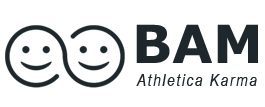Calf stretches are an important part of any exercise or physical therapy routine.
The calf muscles, made up of the gastrocnemius and soleus muscles, play a crucial role in activities such as walking, running, and jumping.
However, not all calf stretches are created equal. In this post, we’ll cover the best and worst calf stretches, the benefits of each, and tips for getting the most out of your stretching routine.
Always remember to consult with your doctor, physiotherapist or physician first before performing any of these and other calf stretching exercises. It’s important you have a tailored exercise or rehab plan that is a fit for your situation. Your physician or physio (ex. compare calf stretchers on Amazon.com) clinic can best prescribe the right exercises for you and exercise tools to support your recovery.
The best calf stretches
Standing calf stretch
This stretch is performed by placing the ball of your foot on a step or curb, with your heel hanging off the edge, and pressing your heel down towards the ground. This stretch targets the gastrocnemius muscle.
Seated calf stretch
This stretch is performed by sitting on the floor with your legs straight in front of you, and using a towel or a band to pull your toes towards your body. This stretch targets the soleus muscle.
The Seated Calf Stretch is a simple but effective exercise designed to stretch and improve the flexibility of the calf muscles, primarily targeting the gastrocnemius and soleus muscles.
How to Perform the Seated Calf Stretch:
- Find a sturdy chair or surface to sit on, preferably one where you can let your feet hang freely.
- Sit down, and extend one leg straight in front of you.
- Keep the other leg bent at a 90-degree angle, placing the foot flat on the ground.
- Gently flex the foot of the extended leg (the one you want to stretch) back towards your body.
- You should feel a moderate stretch in the calf of the extended leg.
- Hold the stretch for 20-30 seconds, feeling the tension in the calf muscle.
- witch to the other leg and repeat the process.
Benefits of the Seated Calf Stretch:
Regularly performing this stretch helps increase the flexibility of the calf muscles, reduces muscle tension and helps prevent injuries (ex. calf strains or Achilles tendon issues), which is crucial for maintaining good mobility, especially for activities like running and walking.
Flexible calf muscles contribute to better overall posture, as they play a role in proper alignment of the lower body.
Calf stretch using a slant board
Consider using a slant board for calf stretching (compare on Amazon) is a highly effective exercise to not only work the full calf muscle, but other areas connected to the calf that benefit, such as the knees flexibility, ankle mobility, stretch the achilles, and more.
This stretch is performed by placing the ball of your foot on the top of the slant board and your heel on the floor, and slowly lowering your heel towards the floor. This stretch targets both the gastrocnemius and soleus muscles.
There are numerous benefits to using a slant board to stretch the calf muscles, and other parts of the lower body.
- Enhanced Flexibility: The slant board allows for a deeper stretch, improving calf muscle flexibility.
- Injury Prevention: Regular calf stretching reduces the risk of calf muscle strains during physical activities.
- Improved Ankle Mobility: This stretch benefits ankle range of motion, vital for various sports and movements.
- Reduced Muscle Tension: Helps alleviate tightness and discomfort in the calf region.
- Better Posture: Flexible calf muscles contribute to overall body alignment and posture.
Check out some other great exercises you can perform at home, in the gym or at the office to stretch your calf muscles.
- Achilles tendonitis: 5 exercises to prevent or recover from Achilles tendonitis
- Calf exercises to improve flexibility, balance and strength
- Unlock the benefits of calf stretching with a slant board
The worst calf stretches
Heel-up calf stretch
This stretch is performed by standing on one foot and lifting the heel of the other foot off the ground, and leaning forward. While it can help, the stretch can place to much excessive stress on the Achilles tendon and can cause injury.
Ballistic calf stretch
This stretch is performed by bouncing up and down on the balls of your feet. This hit our list of worst calf stretches due to the stretch can easily cause muscle tears and other injuries.
The ballistic calf stretch is a dynamic stretching exercise aimed at increasing flexibility and range of motion in the calf muscles. However, it’s important to note that ballistic stretching involves using momentum to push your muscles past their normal range of motion, which can be risky if not done correctly. While we’ve categorized this in our list as one of the worst calf stretches, it does serve its purpose for some individuals and can be effective. Always consult a doctor or professional first for advise and before performing a ballistic calf stretch.
Advantages of the ballistic stretch
- Dynamic Stretching: Ballistic stretching is dynamic, meaning it involves movement, which can help improve functional flexibility and prepare your muscles for activities that require explosive movements, such as running or jumping.
- Increased Range of Motion: When done correctly, ballistic stretching can help increase your range of motion more quickly than static stretching alone.
Cons of ballistic calf stretch
- Risk of Injury: One of the major drawbacks of ballistic stretching is the increased risk of injury, especially if not performed correctly. The use of momentum can lead to overstretching, muscle strains, or other injuries.
- Not Suitable for Everyone: Ballistic stretching may not be suitable for individuals who are new to stretching, have existing muscle injuries, or limited flexibility. It’s important to have a certain level of flexibility and muscle control before attempting ballistic stretches.
- Risk of Overstretching: The dynamic nature of ballistic stretches can make it easier to overshoot the desired range of motion, leading to overstretching and potential injury.
Benefits of calf stretches
The benefits of stretching the calf muscles include improved flexibility, reduced pain and discomfort, and improved range of motion. However, it is important to perform stretches properly to avoid injury.
When stretching the calf muscles, it’s important to maintain proper form to ensure maximum benefits and prevent injury. Always make sure to warm up before your stretching routine and stretch after to improve flexibility and prevent muscle soreness. It’s also important to listen to your body and do not overdo it.
Another tip for getting the most out of your calf stretches is to focus on your breath and engage your core muscles throughout the stretches. It is also crucial to consult with a medical professional before starting any kind of stretching routine.







